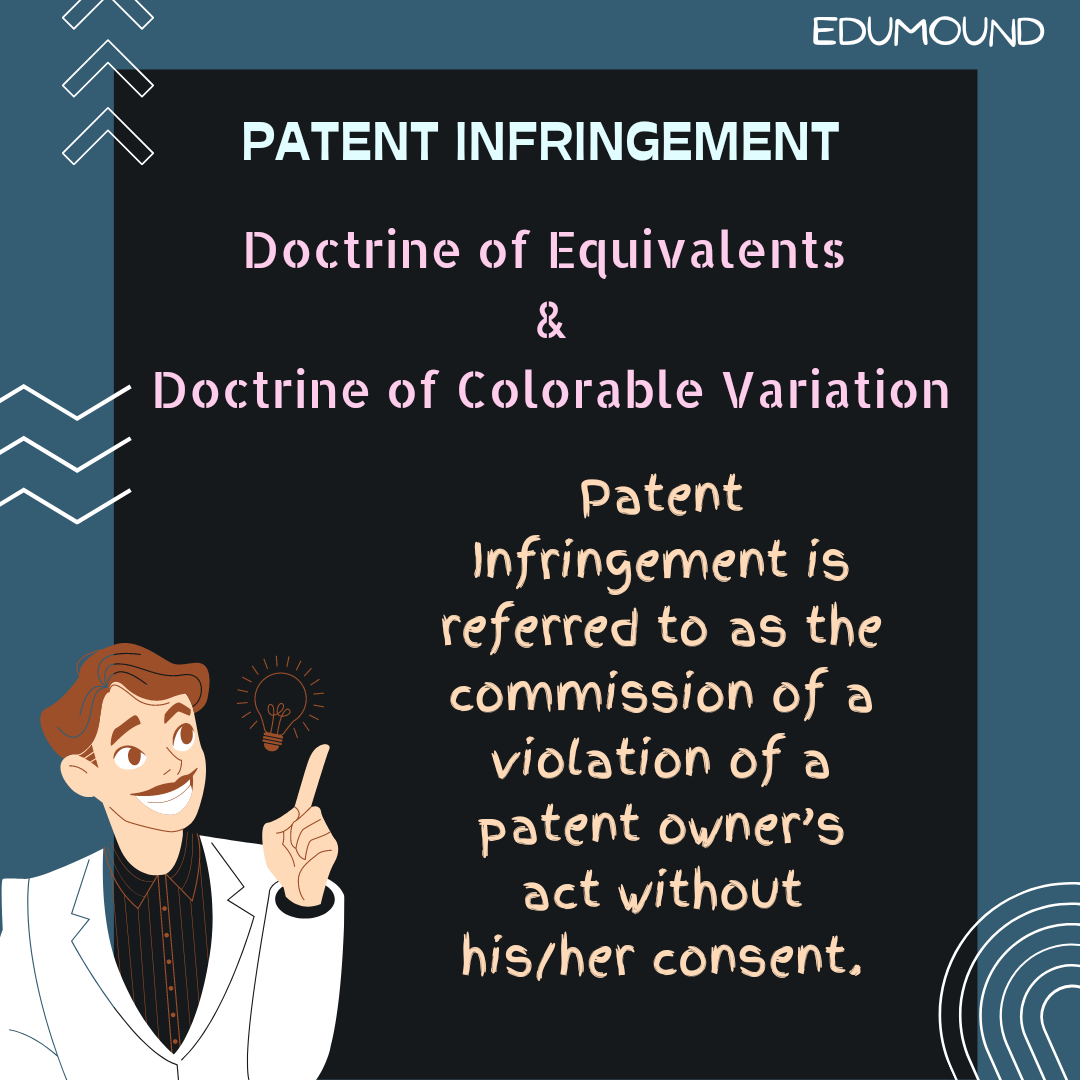
Patent Infringement | Doctrines of Equivalents and Colorable Variation
keywords – patent infringement, doctrines, patents, doctrine of equivalents, doctrine of colorable variation
Written By – Shriya Biswas
The Doctrine of Equivalents
Patent Infringement is referred to as the commission of a violation of a patent owner’s act without his/her consent. One commits a “patent infringement” by using, selling, or offering to sell something that contains some element of a patent claim while that particular patent is still in effect.
Patent infringement falls into two categories: literal infringement and doctrine of equivalents.
The term “literal infringement” means that each and every element has an identical
resemblance to the alleged device.
The “doctrine of equivalents” is a rule that allows a court of law to hold a party responsible if the infringing device is equivalent or has similarities to the claimed invention. The claim, however, has certain limits. The scope of the patent owner is limited by:
- The prior art
- The doctrine of “prosecution history estoppel”
Once a claim is made then a thorough analysis is done considering the following steps:
- Construing the scope of the literal language of the claims.
- Compare the claims with the accused device to see if any literal infringement is done.
- If there is no literal infringement found then the scope is construed under the doctrine
of equivalent.
Doctrine Of Equivalent Patents in India
This doctrine is not popular in India and has not been dealt with extensively. It was first
discussed in the case of Ravi Kamal Bali vs Kala Tech in India. In this case, the court of law
found that the claimed product and the patent product had the same usage and worked on the
principles or doctrines. However, since the court did not find any major difference in both
constructional and functional aspects of the product, the court ruled against the findings of
the doctrine.
Thus, the practice of the doctrine had been established but no explicit announcement had
been made or any major drafting had been done.
Conclusion
Therefore, we see that The Doctrine of Equivalent Patents has been implemented to protect a
patentee from non-literal infringement. However, the scope of the amount of non-literal
infringement can be only decided by a court of law and also depends on a large amount of the
particular case.
The Doctrine of Colorable Variation
This particular doctrine deals with the determination of infringement which is a minor
modification in the process but the features and results are the same as that of the patented
version.
A major example of the usage of this doctrine is in the case of Lektophone Corporation vs
The Rola Company.
Controversy arose when a radio loudspeaker was manufactured by the defendant and a
similar sound-producing device was invented by the plaintiff for phonographs. The plaintiff
claimed that the “size and dimensions” were the main features of the device and that had been
infringed by the radio loudspeaker.
However, the court ruled in favor of the defendant as there were more important aspects to
consider other than size and dimension such as functions of the invention.
Conclusion
Thus, we see that these legal rules protect the works and inventions of any patent holder from
damage or imitation. It declares that any party is considered to infringe if it shows
resemblance to a work of a patent holder.
If guilty of Patent Infringement, there are grave consequences. The offender is liable for a
fine of up to 10 lakhs and in severe cases, it can also result in imprisonment for 6 months.






